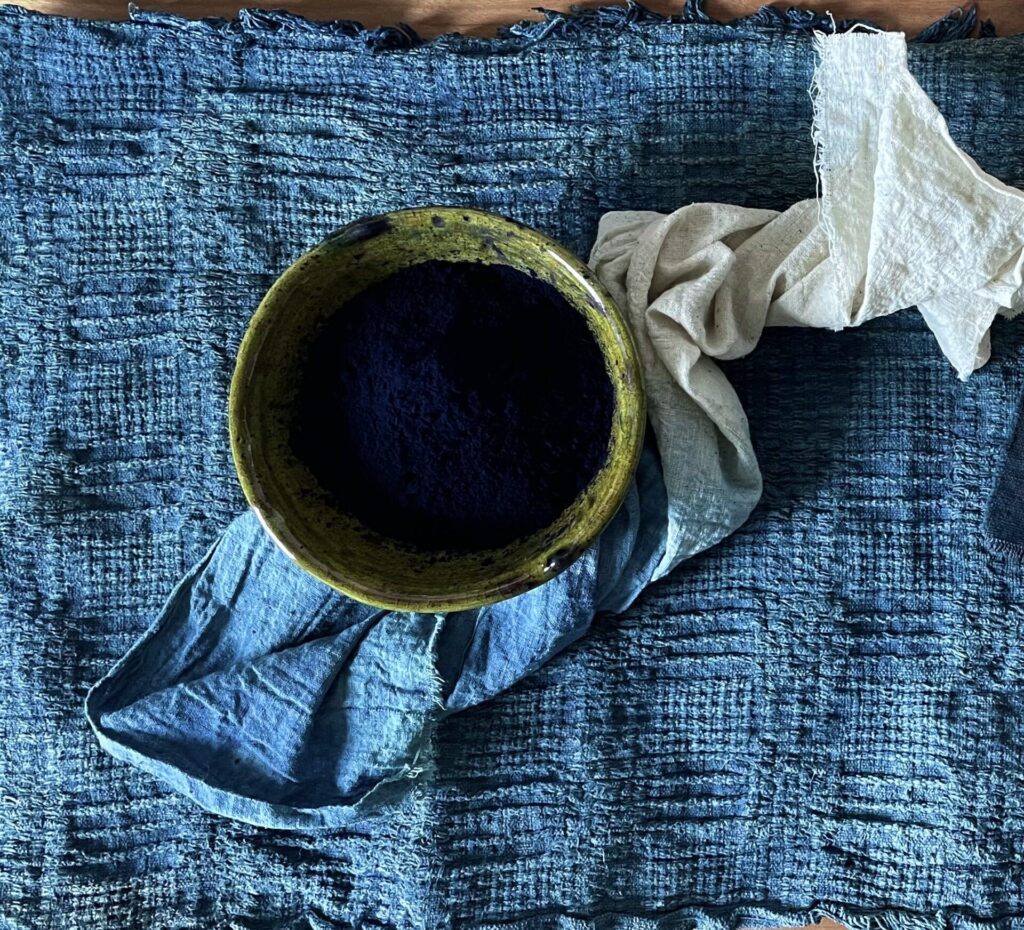
We get mordant questions all the time at Botanical Colors so why not create Mordant Monday??? Got mordanting questions? Email [email protected]
YOU ASKED: I use aluminum triformate as my mordant for cellulose and silk. I am planning to dye linen with weld and was told that I didn’t need to use a tannin before dyeing if using potassium triformate.If I do need to use a tannin and have already mordanted the linen, do I go back and use tannin and remordant?
KATHY ANSWERED: I have concentrated on using a tannin pretreat with aluminum sulfate and haven’t done so as frequently with aluminum triformate or aluminum acetate, but I know others have. If you’ve already mordanted, you can immerse the mordanted fabric in a tannin bath and proceed, and you can also repeat the aluminum triformate mordant after the tannin immersion if you wish. In earlier times, it was fairly common to repeat the tannin and mordant process several times to achieve darker shades, so this is possible to do as well.
YOU ASKED: I do indigo dyeing and trying to convert to natural reduction rather than thiox. In overdyeing with indigo, or overdyeing indigo with another color, does it matter the order based on the mordants? In other words, will using certain mordants effect the indigo overdye?
KATHY ANSWERED: I was trained on a thiox vat and one thing I learned was that putting a naturally dyed fiber into this vat would remove the color, often with unwanted results. Both thiox and sodium hydrosulfite are used industrially as reducing agents and as color removers, so this makes sense, but it was annoying. I have to admit that my indigo overdye practice using thiox never achieved very good outcomes so I learned to dye with indigo first, and then mordant and dye with the natural dye color. This method was much easier to control.
You ask a great question, because natural reduction with a 1-2-3 indigo vat does not appear to “strip” the color like a thiox vat does, so it may not matter as much to the final outcome. However, I did read in Catharine Ellis’ book that the high pH of any indigo vat may damage or weaken the alum mordant bond. So, using indigo first regardless of the vat might be the best strategy. Good luck with the transition – I think you will find that the 1-2-3 vats build color more slowly but they yield really beautiful blue shades.

Great question re the indigo and mordanting. I have often wondered about this but have always mordanted first if I am overdyeing the indigo with a 1-2-3 vat just to save time between the dyeing. What I have noticed is using yellow before or after the vat gives 2 very different results. With a fructose vat last year on silk got the most amazing bronze when overdyeing marigold yellow with indigo.